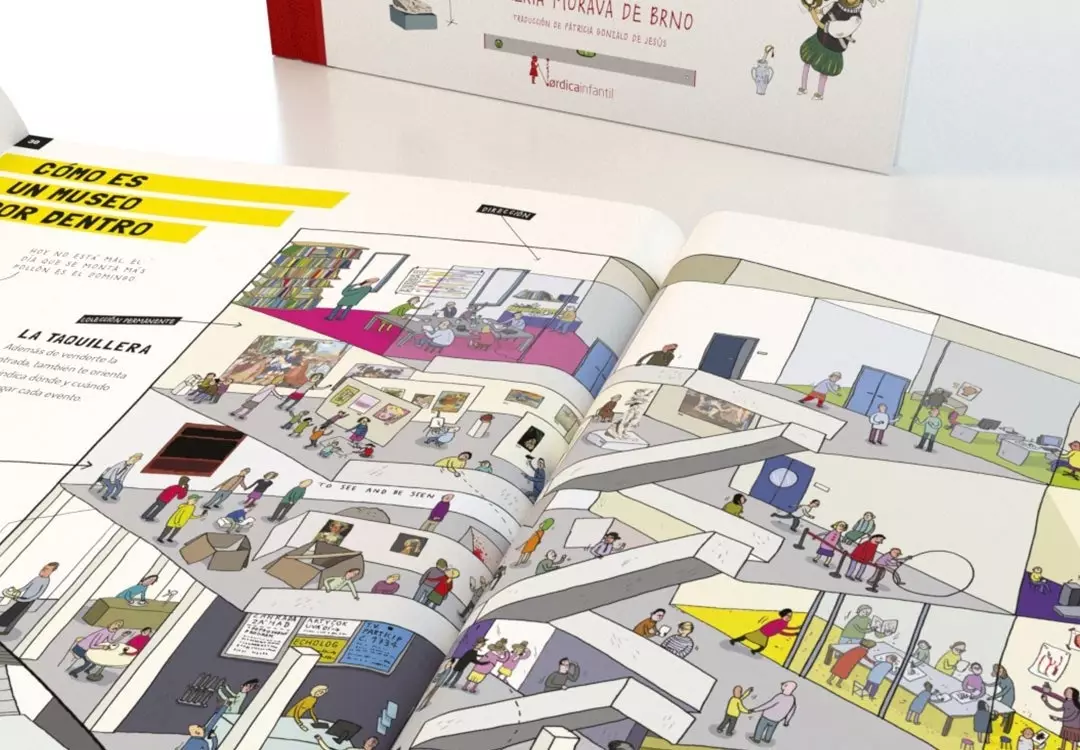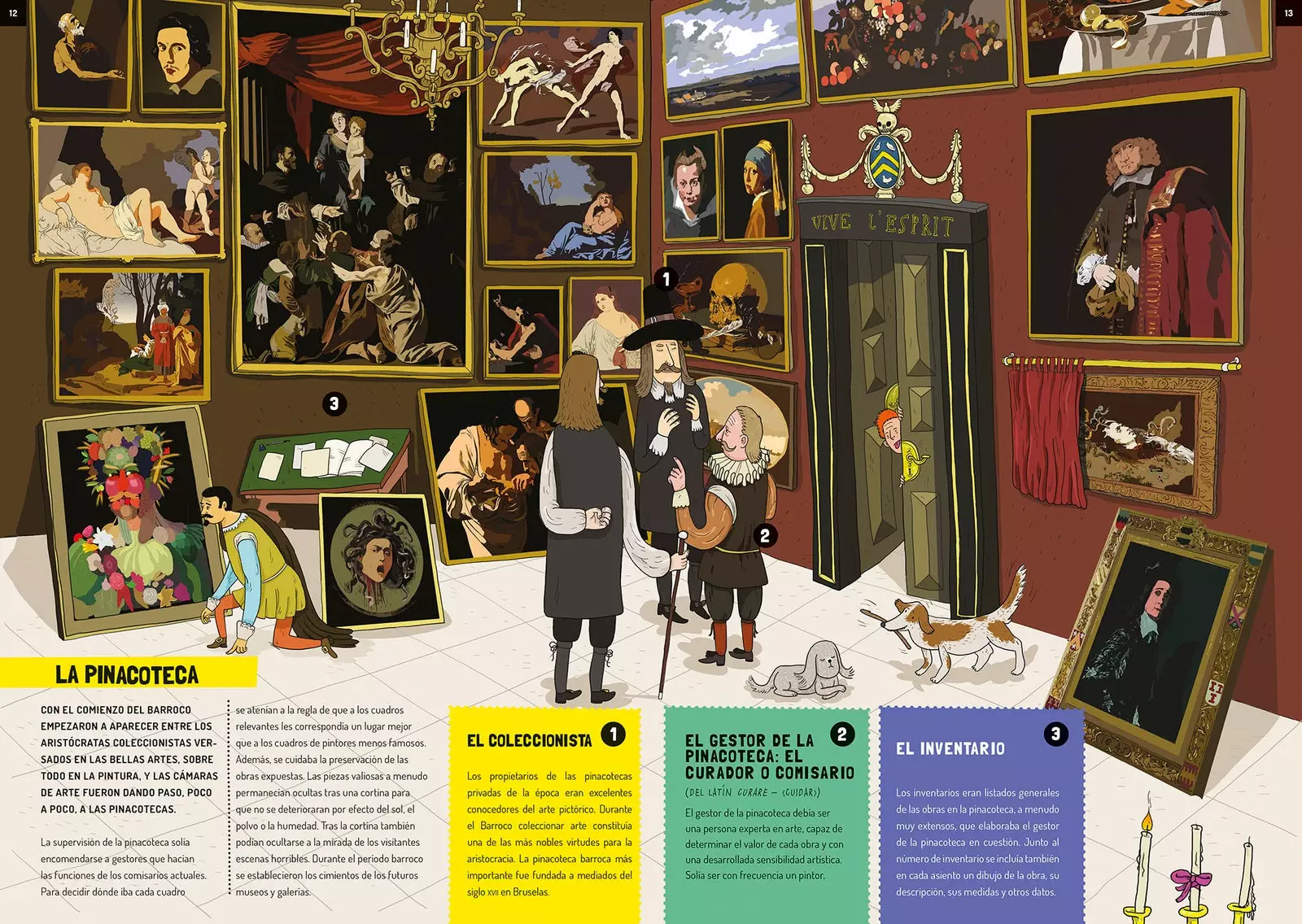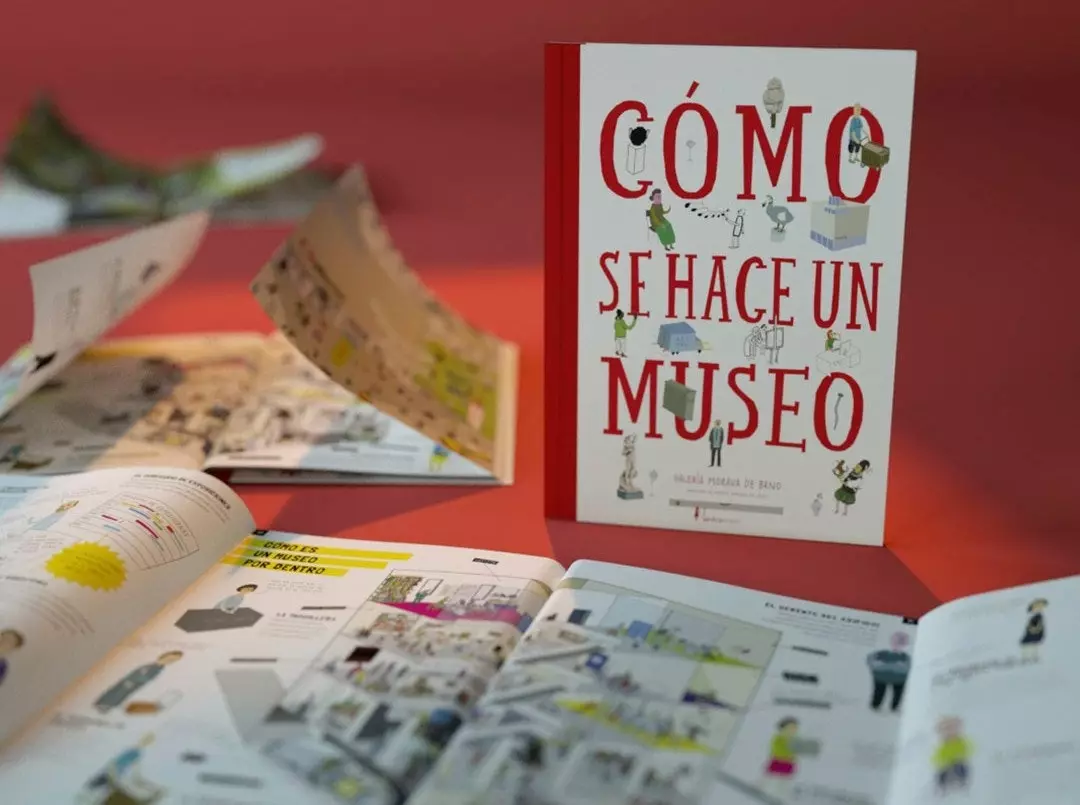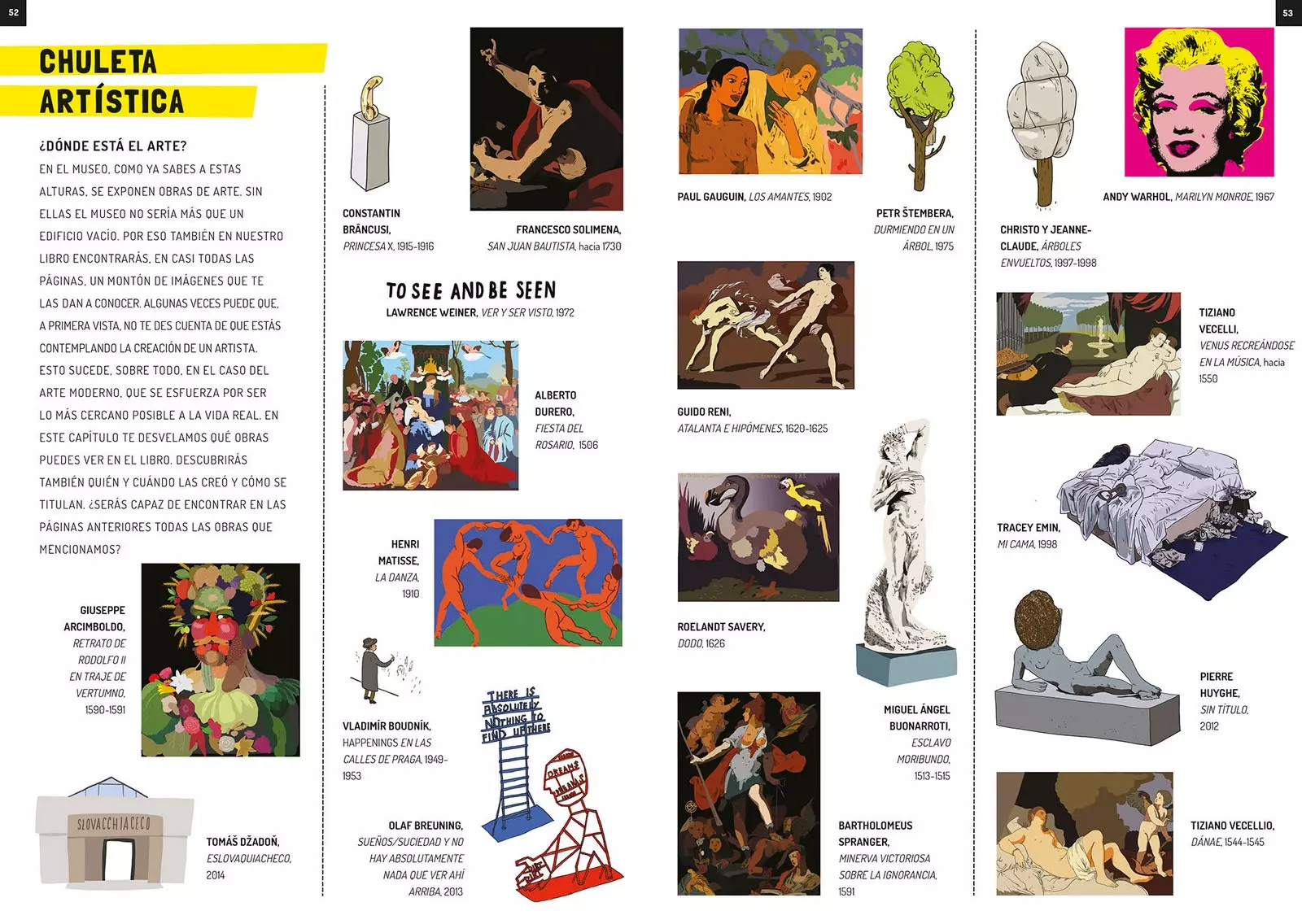
Detail of the illustrated album 'How to make a museum'.
Do you know what catapulted the Mona Lisa painting to fame? A theft! It was a summer day in 1911 when they discovered that on the wall where this painting by Leonardo da Vinci should be there were only four iron spikes and no trace of what had happened. All the newspapers in the world echoed the news, but it was not until two years later that the mystery was solved.
What had happened? the key is in an Italian painter who, it seems, wanted to return the work to his native country. So he agreed to the Louvre, he hid in the broom room overnight, dressed as a clerk and he took it out the door the next morning. He had it hidden in his apartment for a long time, but they stopped him when he was trying to sell it. The events went around the world and since then, interest in the painting has not stopped growing.

Discover what an art gallery is like in an illustrated way.
THE BOOK
Now, this surprising story is just one of the many collected in How to Make a Museum (Nordic Children), an illustrated album for children (and adults!) that explains a thousand and one curiosities about the origin of museums and art galleries, but also about everything behind an exhibition. Incredible illustrations and three foldouts with everything you'll see (and what's behind) when you visit.
Do you know, for example, at what temperature a painting should be stored? Or why the regional museum in Hannover was the first to exhibit canvases by Picasso ? How far in advance is an exhibition scheduled? Who created the MOMA in New York? Or what is the origin of museums?

Cover of the illustrated album 'How to make a museum'.
All of these questions are answered in this book. “The origins of public museums go back to the year 1506, when an ancient sculptural ensemble was found in a vineyard in Rome. Julius II, who was the pope at the time, he commissioned his court architect and another artist who worked at his service and who was none other than Michelangelo to assess the find.
These immediately realized that they had before them a true jewel of classical sculpture that represented Laocoon and his sons. For this reason the pope bought the sculptural group from the owner of the vineyard and **had it collected, repaired and exhibited in the Vatican so that his distinguished guests could admire it there. **

Artistic chop from the book 'How to make a museum'.
THE ILLUSTRATIONS
between the illustrations we also discover who works in a museum. From the curator to the manager of the bookstore, through the store manager, the production technician, the photographer, the cleaning staff, the curator or the person who sells tickets.
It also explains the illustrated album the different ways that an art gallery has to obtain a painting, why contemporary galleries are always painted white inside, what the shape of the Pompidou in Paris responds to or who put a bed with a rumpled duvet and pillow in the middle of an exhibition.
A manual (already essential) –which was awarded at the Bologna Book Fair– and which comes loaded with drawings, interesting information and even an "artistic chop" of the works that appear so that we can give ourselves (or give away) a little art.
